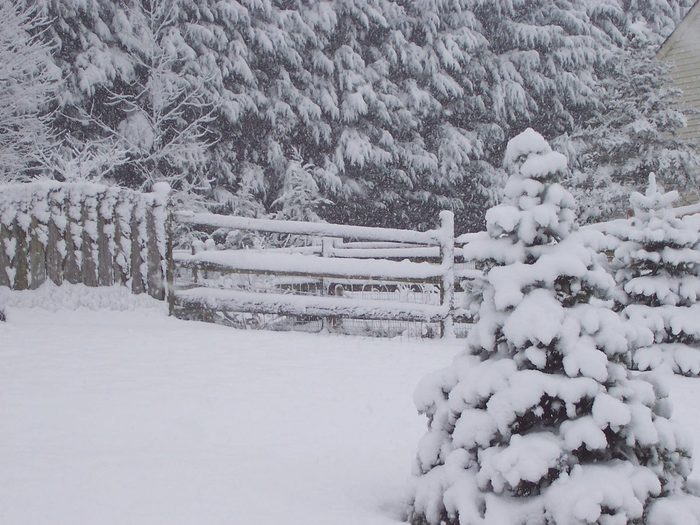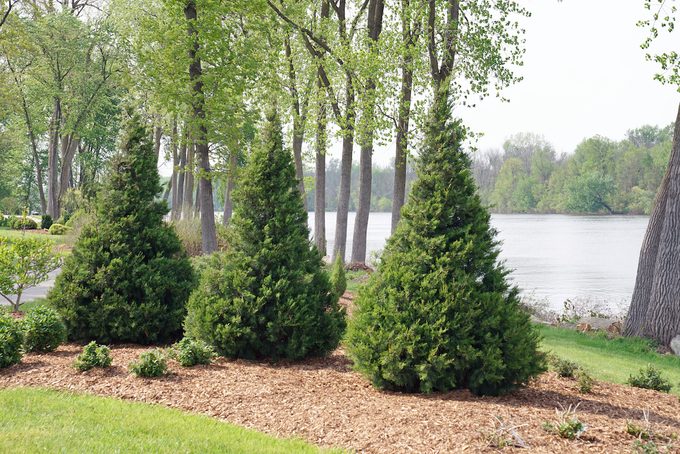Ask the Experts: Winter Shrub Covers and Protection
Updated: Jan. 02, 2024

Our garden expert talks about how to protect shrubs from heavy snow, wind and cold weather, including how to use winter shrub covers.
On This Page
How to Protect and Cover Shrubs in Winter
“Which shrubs should I protect for winter, and what’s the best way to use winter shrub covers?” asks Birds & Blooms reader Robin Evans of Export, Pennsylvania.
Horticultural expert Melinda Myers says, “Broadleaf evergreens are the most susceptible to winter damage in colder regions like yours. Hemlocks, less hardy and newly planted needled evergreens, and shrubs exposed to drying winds and winter sun also benefit from protection. Create a wind break and a bit of shade with burlap or landscape fabric. Mount the fabric on stakes or posts placed on the windy and sunny side of the plants. Other options include decorative fencing, a plain old snow fence, a pop-up plant protector or a winter shrub cover.
Give tender plants extra TLC. After the ground freezes, apply winter mulch to grafted hybrid tea roses, borderline hardy plants—or anything that may need a little help through the winter—by piling on evergreen boughs, weedfree straw or marsh hay. After the holidays, discarded Christmas trees also provide welcome shelter for birds and create windbreaks for broadleaf evergreens. Place the discarded tree so that it blocks the wind from sensitive plants.
Further reduce winter damage to shrubs by keeping them healthy throughout the growing season. And water your shrubs thoroughly before the ground freezes.
Winter Storm Damage on Trees and Shrubs
Don’t shake ice and snow off your plants. Doing this can break branches, causing even more damage than the nasty weather already has. Prevent splitting and broken branches on arborvitae and other upright evergreens by loosely tying their stems together with cloth strips or canvas strapping. If you’re exposing berries for birds, brush off the snow gently.
Remove damaged branches when weather permits. Snow and ice storms can take a heavy toll on even the hardiest, best-established trees and shrubs. A broken bough dangling over a sidewalk or driveway is a recipe for disaster, so when you can do so safely, cut it off.
In the future, save yourself some work by planting new landscape additions in areas where they’ll be protected from these extreme cold weather conditions. Plants perform best on the east side of a house or building where they take advantage of the afternoon shade.
Read more: The best small evergreens shrubs to grow.
Wind Resistant Evergreen Shrubs

“I’m looking for evergreen shrubs to go along my fence. We get frequent westerly winds. Which shrubs are more wind resistant than others?” asks field editor Juli Seyfried of Grove City, Ohio.
Melinda says, “Junipers are heat, drought, deer and wind resistant once established. They do best in full sun and well-draining soil. Select an upright variety, either a hybrid or a Chinese juniper that’s resistant to phomopsis blight.
If your fence blocks the wind, arborvitae are an option. They prefer moist, well-draining soil and full to part sun, but they tend to be a favorite of deer. The western arborvitae (Thuja plicata) is somewhat less susceptible to deer damage than American arborvitae (T. occidentalis).
Upright yews (Taxus) require growing conditions similar to arborvitae, including shelter from winter winds. Always check plant tags and make sure the ones you select will fit in the space once they reach full size.”
Each month, Birds & Blooms readers send in their questions to gardening expert, Melinda Myers, who is a nationally known, award-winning garden expert, TV/radio host and author of more than 20 books.
Got a gardening question for Melinda? Submit your questions here! They may appear here or in a future issue of the magazine.





















